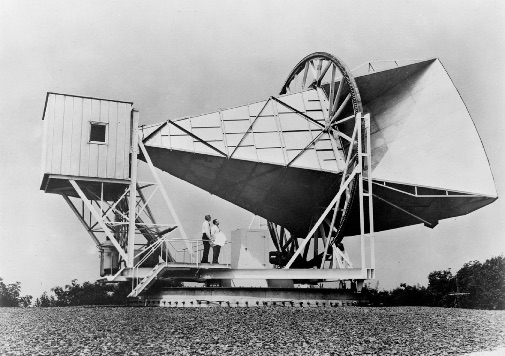
The Cosmic Microwave Background is the oldest light in the universe. Once impossibly bright and hot, it has cooled to less than three degrees above absolute zero and faded to invisible microwaves. But it is still there – a true relic of the beginning of the universe, perceptible to radio telescopes as a background to everything else we can see in the observable universe, the surface of a sphere that we observe from its very centre – a horizon that is the beginning of time and the end of space.

On 20 May 1964, Arno Penzias and Robert Woodrow Wilson – working with the newly contructed Holmdel horn antenna at Bell Laboratories in New Jersey, USA – recorded measurement of an excess 4.2K antenna temperature which they could not account for.

At first, Penzias and Wilson thought this might be an error, due perhaps to bird droppings on the surface of the dish. They went to Princeton University (less than 10 miles away) to consult with Robert Dicke, a leading cosmologist who was in the process of building a radio telescope to measure the Cosmic Microwave Background. Dicke immediately recognised the temperature they had measured as very close to what he had calculated he would find for the background temperature of the universe. Penzias and Wilson later received the Nobel Prize in Physics for their discovery.

Emmett Place, Cork, Ireland
T12 TNE6
Tel: 021 480 5042
info@crawfordartgallery.ie
Opening Hours
N.B. Last entry is 15 minutes before closing
Monday–Saturday 10.00am–5.00pm*
Thursday until 8.00pm
Sundays and Bank Holidays
11.00 am–4.00pm
© 2024 www.crawfordartgallery.ie